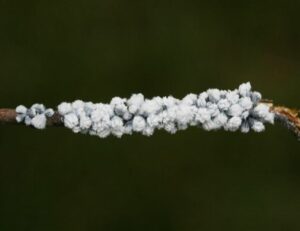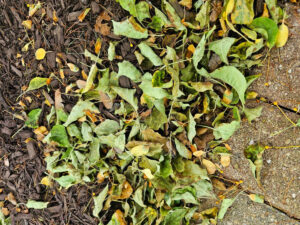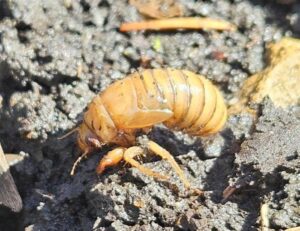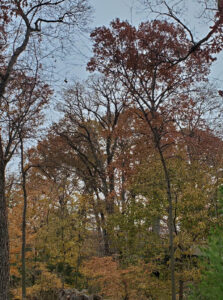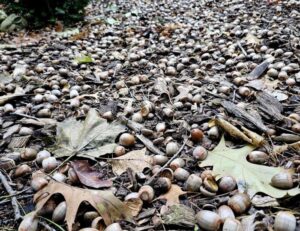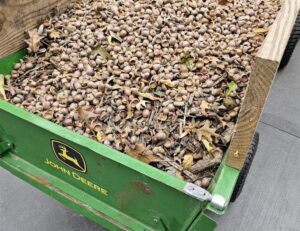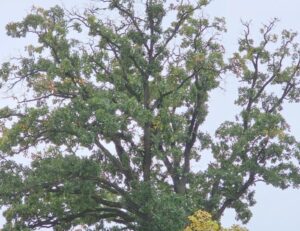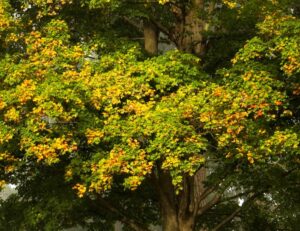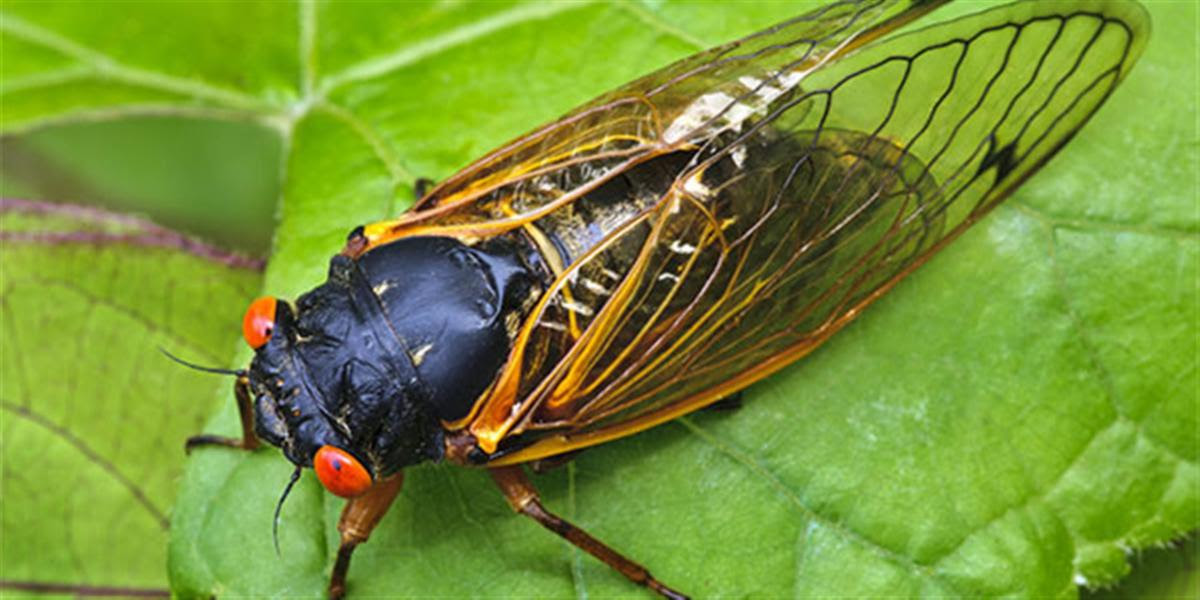
In May, when soil temperatures reach 64 degrees, our trees will be attacked by some unwanted guests. Well, not some unwanted guests, more like billions and they will be loud… very, very loud.
We discussed this Cicada in an earlier email newsletter we sent in the Spring of 2023 when we suggested avoiding planting any new trees until the Fall of 2024 or Spring of 2025. The reason? This Cicada will be attracted to young trees due to their thin bark and sweet sap. If enough visit a single young tree, they may kill it.
If you currently have young trees with less than a 2 ½ inch trunk diameter, you might want to plan ahead and buy protective netting now, before it is in high demand, at which time you most likely won’t be able to find them. Shortages occurred last time they visited in 1990 and 2007 as we recall. Be advised you’ll need enough square footage to completely cover the tree and tie it off close to the base of the trunk.
Trees that are too large to cover will suffer some, but they will be more able to deal with the damage caused by this insect.
THE PERODICAL CICADA…
These guys visit once every 17 years. During the past 17 years, they have been feeding underground, sucking the juices from tree and shrub roots awaiting their day in the sun. As they emerge from the soil, they will climb any vertical object but mostly, they climb trees. They are temporarily restricted to climbing because their wings are not yet exposed. They lock on to these vertical structures and once firmly attached, begin the process of shedding their protective outer skin referred to as their exoskeleton.
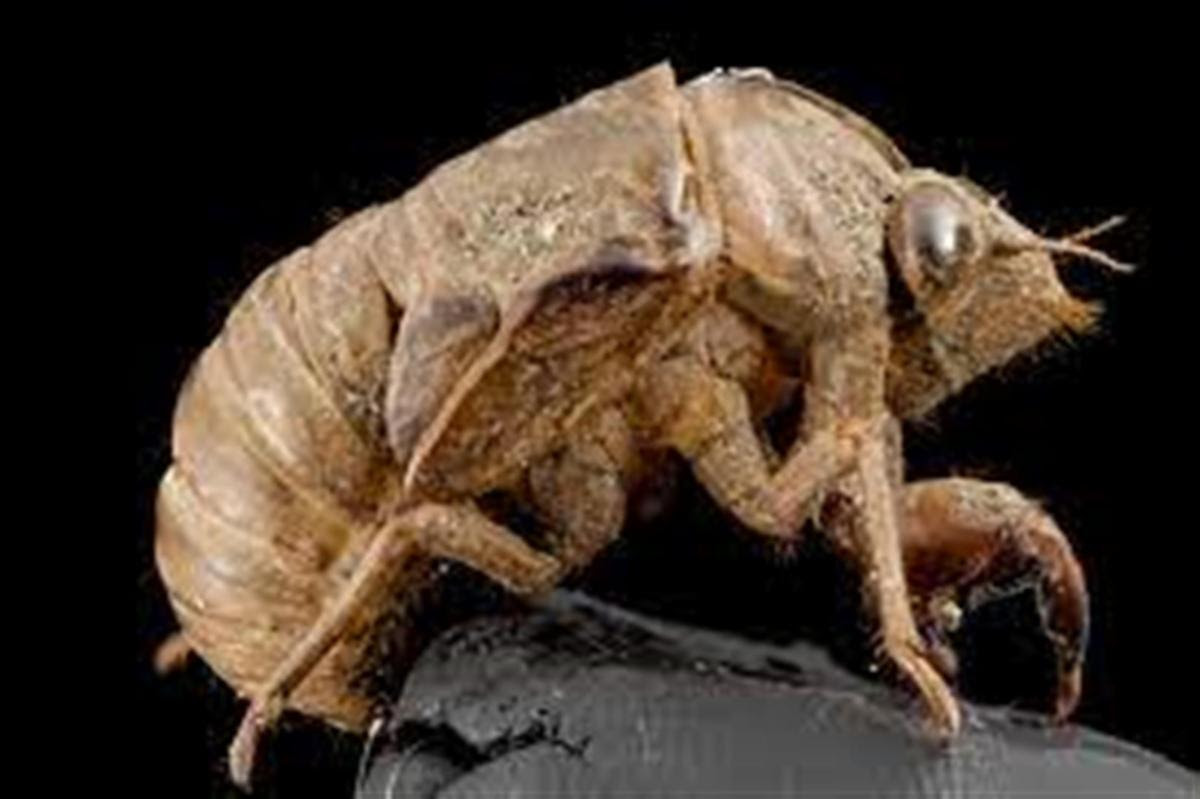
Abandoned, dried-up outer shells such as this one will either sluff off naturally over time or can be removed with a broom or stiff stream of water from your garden hose.
Once free of its shell, the cicada initially pumps fluid into its wings, expanding them. They then sit tight waiting for their wings to dry out, at which point they can fly. Soon after, the males will begin making a deafening noise in their attempt to attract females.
Female will mate many times and each time mating is complete, she cuts long slits in tree branches or tree trunks. In these slits, they lay 8 to 10 eggs then move further down the branch cutting additional slits and depositing more eggs. A single adult female can deposit as many as 600 eggs during their visit which lasts a couple of months. Once fulfilling their responsibility for future generations, the adult female dies and falls to the ground.
The baby nymphs that emerge from the eggs will feed on the sap around the bark slit. Eventually, they too will drop to the ground and burrow into the soil seeking out tree or shrub roots which is where they will feed over the next 17 years…continuing the process.
IS ALL THIS HARMFUL TO TREES?
It is…but most trees, especially healthy trees, can deal with the damage they create.
As we personally experienced during the past three outbreaks in 1973, 1990 and 2007, our phones will be ringing off the hook from folks requesting chemical insecticide control. Chemical treatment is not recommended nor will it be offered by Tree Green. We will however highly recommend Spring and Fall High Pressure Root Fertilization to keep trees as strong, healthy, and as resilient as possible, aiding in their recovery process.
Be aware that attacked trees will display a lot of exterior limb dieback over the entire tree canopy. Eventually, these dead branch tips will dry out and fall from the tree and the tree will regain its healthy appearance over the next few years. On younger trees, where damage is most obvious, unsightly dead limbs can be reached and trimmed off with a pole clipper. If you don’t have a quality pole clipper this might be a good time to purchase one before they too are in short supply.
Be aware that Cicada’s can’t always perfectly time out their 17-year cycle. Some folks may have noticed some of these cicadas last Spring and others will notice some Spring of 2025 but rest assured, 95% will be here in May 2024.
Not every neighborhood will experience this phenomenon. Prairie land and rivers affect where they will or won’t appear so they may not visit you. If you weren’t living in your house the last time they visited, back in 2007, speak to someone who did live in your neighborhood. They will undoubtedly remember. If they were in your neighborhood then, they will be there this time for sure, and in even greater numbers.
SOME ADDITIONAL FACTS…
- Cicadas do not bite and are people-friendly.
- These are large insects that you certainly won’t miss between their 1 to 1 ½ inch length, ¾ inch girth, blood-red bulbous eyes, veined wings, and noise.
- There can be anywhere from 135,000 to 1.5 million cicadas in an area the size of a single city block.
- They will be active above ground for a few months once they start to emerge. These months will seem especially long if you have young children trying to nap. They don’t make a steady noise you can easily sleep to. They ebb and flow much like a wave chart. Once a few males start singing to attract females others are afraid of being left out of the mating ritual and will try to ‘out sing’ the others.
- There will be media reports of residents using shovels to remove the carcasses of the dead adult insects from sidewalks, decks, and patios by mid to late June.
- Cicadas make a tasty treat. You’ll see some very chubby and overly happy birds, squirrels, and raccoons. You’ll even hear stories in the news of people microwaving and eating them, mentioning how much they taste just like almonds. We recommend taking their word for it.
- Of all the different varieties of periodical cicada hatchings that occur in different parts of the country, Northern Illinois’ 17-year cicada cycle is by far the largest brood in existence.
FINAL THING…
You will also be hearing that this hatching will be the first time in 221 years, not since Thomas Jefferson was President in 1803, that the 13-year cicada and the 17-year cicada will both be exiting the ground ‘together’. To those who experienced the excessive noise caused just by the 17-year brood, the combination of both broods may seem especially worrisome. Don’t fret.
The 17-year brood is a northern Illinois hatch and the 13-year is a southern Illinois hatch. Due to this, northern and southern Illinois will experience the same noise level as in the past. The middle of the state where they intersect however? That remains to be seen…


